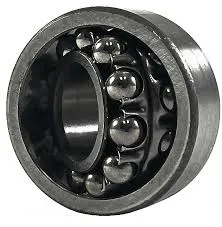
Dec . 13, 2024 06:11 Back to list
thrust ball bearings applications
Applications of Thrust Ball Bearings
Thrust ball bearings are a type of rolling-element bearing that is designed to support axial loads, making them essential components in various mechanical systems. Unlike other types of bearings that primarily support radial loads, thrust ball bearings excel at handling loads that are parallel to the axis of rotation. This unique functionality allows them to be employed in multiple applications across several industries.
1. Automotive Industry
In the automotive sector, thrust ball bearings are pivotal in the functioning of various components. They are frequently used in clutch systems, where they help manage the axial loads generated during operation. For instance, when the clutch is disengaged, these bearings prevent wear and tear by distancing the clutch from the flywheel effectively. Additionally, thrust ball bearings can be found in electric window lifters and power steering systems, where they provide smooth operation and durability under fluctuating loads.
2. Aerospace Engineering
The aerospace industry heavily relies on thrust ball bearings to ensure the safety and efficiency of flight. By adequately managing axial loads, these bearings are incorporated in various aircraft components, including turbine engines, landing gear, and control surfaces. The extreme conditions faced by aerospace applications necessitate bearings that can endure high-speed operations while maintaining precision and reliability. Thrust ball bearings meet these stringent requirements, aiding in everything from the rotation of propellers to the articulation of wing flaps.
3. Industrial Machinery
In industrial settings, thrust ball bearings play a significant role in ensuring the longevity and performance of heavy machinery. They are used in applications such as conveyor systems, where they help support the shafts that carry massive loads. Additionally, they are implemented in hydraulic pumps and compressors, where they provide accurate alignment and stability, thereby preventing premature wear. The ability of thrust ball bearings to handle high axial loads while sustaining high-speed operations makes them indispensable in these settings.
4. Power Tools
thrust ball bearings applications

Thrust ball bearings are also prevalent in power tools, where they provide operational efficiency and reliability. From drills to electric saws, these bearings are designed to endure the significant axial forces that occur during use. Their lightweight and compact design ensures that power tools remain manageable while providing peak performance. Moreover, their ability to reduce friction facilitates smoother operation, which is vital for precision tasks.
As the demand for renewable energy continues to rise, thrust ball bearings are increasingly crucial in the wind power sector. They are used in the gearboxes and rotor assemblies of wind turbines, where they help manage the significant axial and radial loads imposed by wind forces and the weight of the blades. The reliability of these bearings directly impacts the efficiency and uptime of wind turbines, making their selection and maintenance critical for sustainable energy production.
6. Rotating Equipment
Various forms of rotating equipment, including pumps, turbines, and fans, utilize thrust ball bearings to support their operations. In pumps, for instance, they assist in aligning the pump shaft correctly, ensuring efficient flow and preventing cavitation. In the case of turbines, they manage the axial loads experienced during operation, which is vital for maintaining the structural integrity of the machinery. These applications demonstrate the versatility and robustness of thrust ball bearings in supporting diverse industrial functions.
7. Home Appliances
In everyday home appliances, thrust ball bearings contribute to the efficient operation of devices such as washing machines and refrigerators. They help manage the axial loads in motors that drive these household items. This not only enhances performance but also extends the lifespan of the appliances, making them a reliable choice for consumers.
Conclusion
Thrust ball bearings are critical components in a wide range of applications, from automotive and aerospace industries to industrial machinery and home appliances. Their ability to support substantial axial loads efficiently makes them invaluable in ensuring the optimal performance and reliability of various systems. As technology progresses and machines become more complex, the importance of thrust ball bearings is expected to grow, leading to further innovations and improvements in their design and application. Whether in a high-stakes aerospace environment or a simple household device, thrust ball bearings continue to play an essential role in modern mechanical engineering.
Latest news
-
Premium Deep Groove Ball Bearings | High Speed & Reliability
NewsAug.29,2025
-
Durable Scaffolding Clamps - Secure & Reliable Tube Connectors
NewsAug.28,2025
-
Common Failures in Thrust Ball Bearings and Solutions
NewsAug.22,2025
-
How Tapered Roller Bearings Can Take Shock Loads
NewsAug.22,2025
-
Angular Bearings in High-Precision Spindles
NewsAug.22,2025
-
The Impact of Misalignment on Cylindrical Roller Bearing Performance
NewsAug.22,2025
